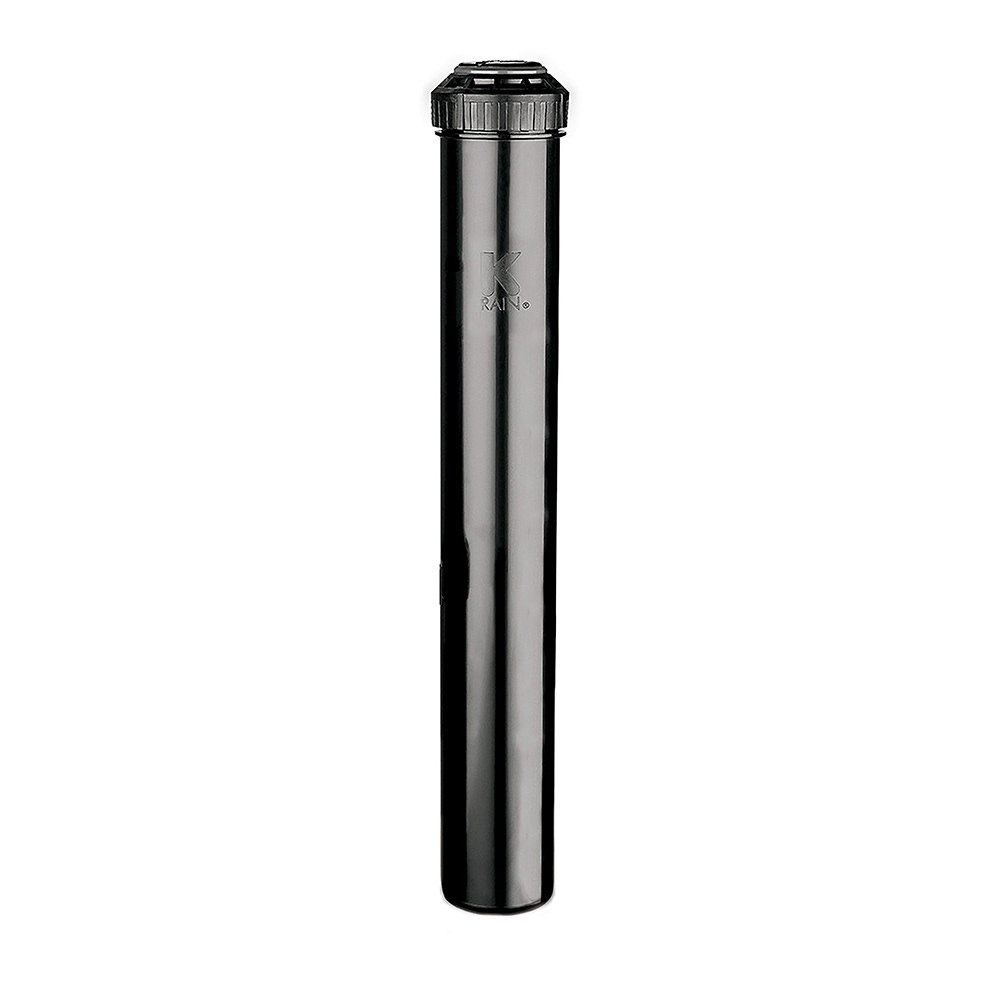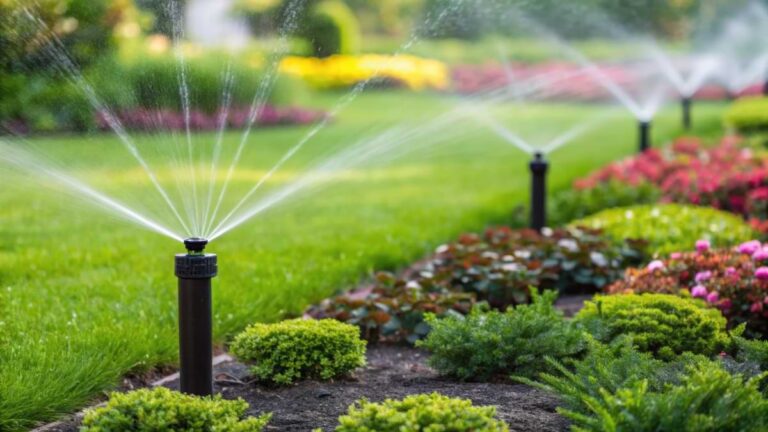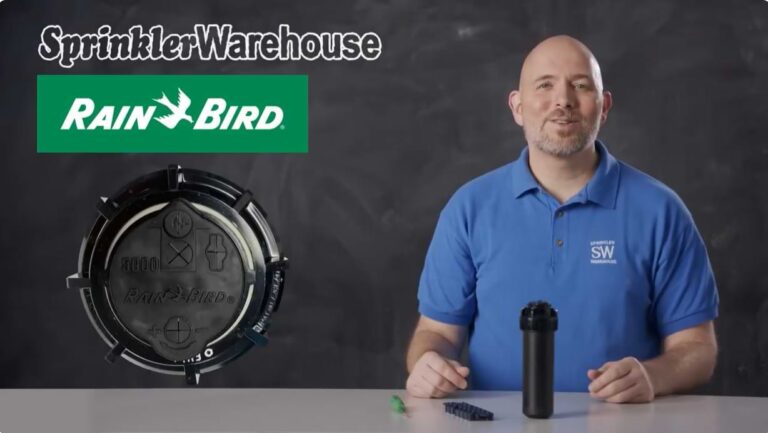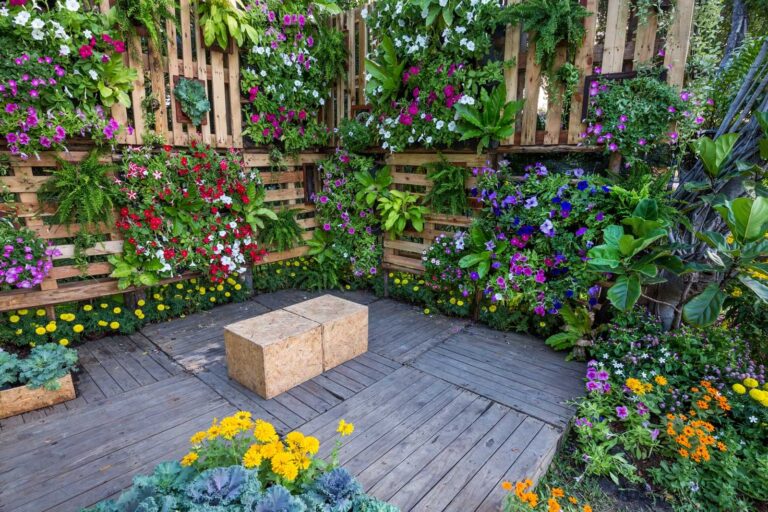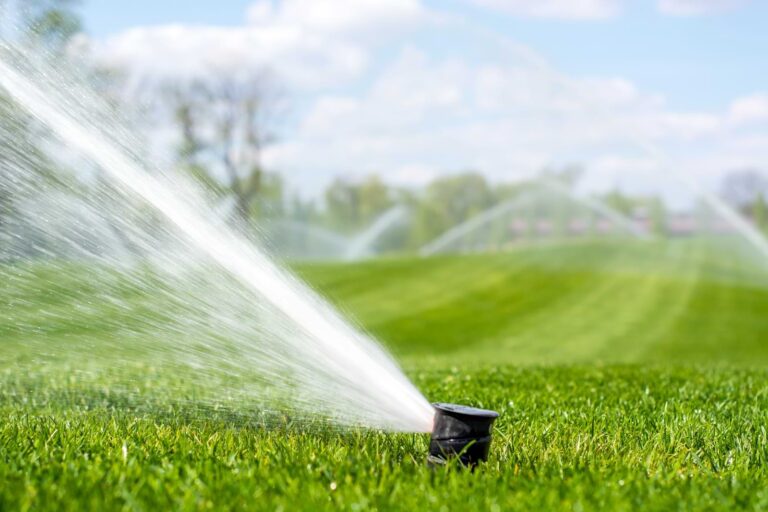A Beginner’s Guide To Drip Irrigation
Tools You’ll Need To Get Started
The images below are an example of a drip irrigation system. The numbers below the image correspond with the parts within the image.


- Control Zone Kit
- A. Low Flow Valve
- B. Pressure Regulating Filter
- Easy Fit Female Adapter
- Easy Fit Coupling
- Xeriman Tool
- Xeri-Black Stripe Tubing
- Xeri-Bug Emitter
- Tubing Stake 3/4″
- 3/4″ Tubing
- 3/4″ Tee
- Tie-Down Stake
- Easy Fit Elbow
- Diffuser Bug Cap
- PC Emitter Diffuser Cap
- PC Module
- Poly Flex Riser Assembly
- BIGIE StakeEnd half of Drip Sprinkler System
- 1/4 Self-Piercing Barb Connector
- Xeri PC Nozzle
- Xeri-Pop
- Xeri-Bubbler
- Air Relief Valve Kit
- SEB-6X Emitter Valve Box
- Xeri-Flex Dripline
- Tubing Cutter
- Xeri-Bird Pro
- In-Stem Pressure Regulator
- EMT-6XERI
- Xeri PC Nozzle Adapter with PolyFlex Riser
- Easy Fit Tee
- Easy Fit Flush Cap
- Purple Landscape Dripling
- Easy Fit Male Adapter
- XT-700 Distribution Tubing
How To Install A Basic Drip Irrigation Or Sprinkler System
Installation of basic drip irrigation or micro-sprinkler system is relatively simple. The first step is to design your layout based on what you’ll be using the system for. Once you’ve acquired the proper equipment, you can begin assembling the system. What follows assumes that you have the correct tools and equipment and are familiar with it.
Step 1 – Attach the vacuum breaker to the pressure regulator. This will keep water from backwashing into your home water supply.
Step 2 – Connect your filter to the pressure regulator then attach the hose swivel to the opening on the side of the filter. Connect everything to your hose bib.
Step 3 – Lay your tubing out according to your design. Be sure that emitters are positioned so that they are close to the root zone of each plant.
Step 4 – Place ground stakes at intervals along your drip tubing to secure it into place. The hook at the top of the stake should fit over your drip tube.
Step 5 – Once all of your tubing has been laid out, install the correct sized pipe fittings and make sure to tighten them then attach an end clamp, end cap, or flush valve at the end of your line.
Step 6 – Test the system. If you see problems within your system, this will be the time to fix them. Following are some simple troubleshooting techniques that can be used to fix a drip irrigation system.
Obviously, this is a very basic installation, but the same principles apply to larger jobs. Specifically, though, it’s a matter of careful planning and attention to detail.
Drip irrigation is a tried and true method for maximizing the efficiency of delivering water to your plants. Once you’ve planned, installed, and used your drip irrigation system, you’ll be on your way to more effective and cost-saving irrigation. For more information on troubleshooting your drip irrigation system, or to purchase drip irrigation parts or supplies, visit Sprinkler Warehouse.
FAQ
What should I do if no water is coming from the emitter?
Clean the emitter or replace it, depending on how clogged it is.
Why is the tubing blowing off of my drip system?
Tube or emitter blow-off is caused by too much pressure in the system. The easiest remedy is to add a pressure regulator to the line that is causing the problems.
How do I fix leaks between my fittings or between pieces of tubing?
First, check the connections and ensure they are tight. If you’re dealing with a small leak in the pipe, you can use a dresser coupling to fix the leak. For larger leaks, you may need to cut out the damaged section of the line, insert an additional length of the drip line, and use fittings to seal the connections.






















